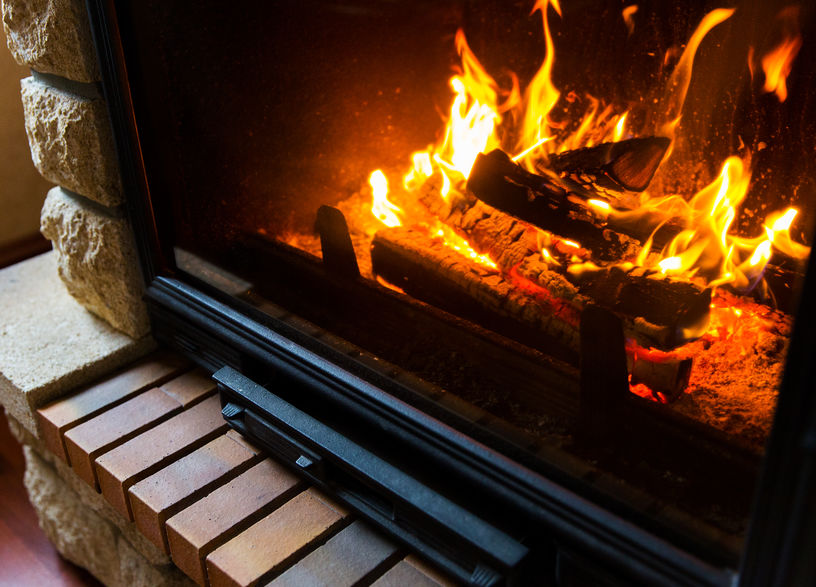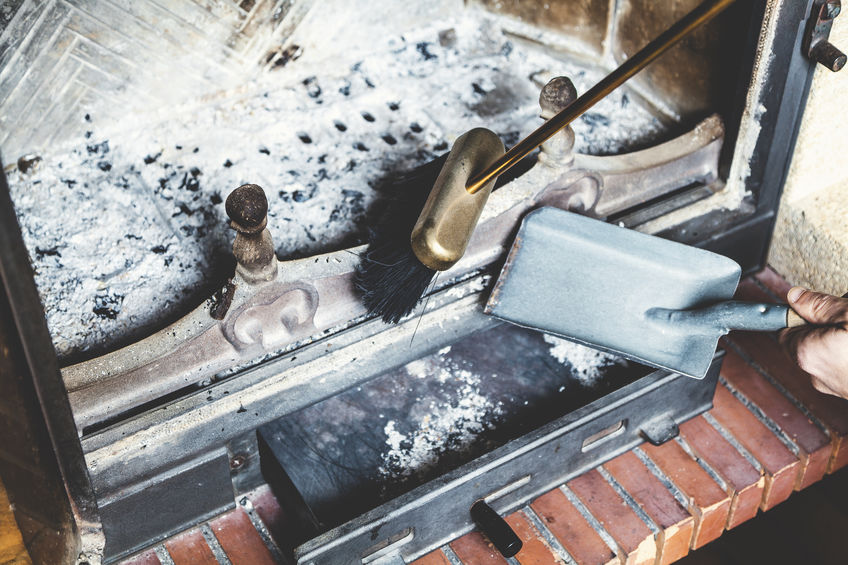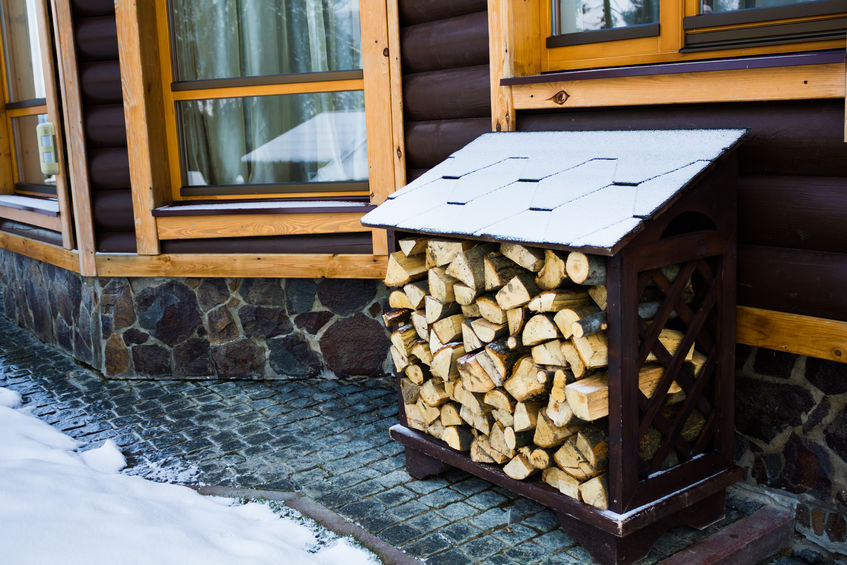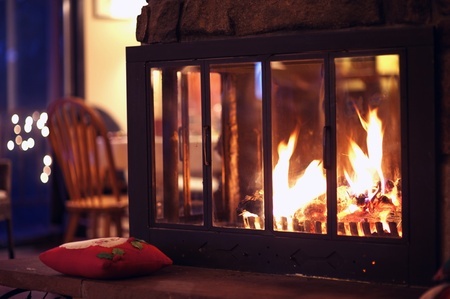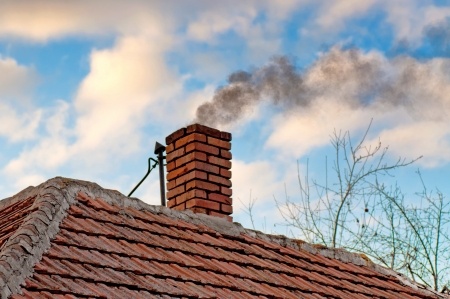- Clean Home
- Home Maintenance
- Easy Fireplace Maintenance Tips
Easy Fireplace Maintenance Tips
Easy fireplace maintenance tips. The air is crisp; the nights are cool. What better way to complete the cozy picture than a roaring fire in the hearth, keeping you warm and comfortable?
If you haven't given your fireplace a thought - or a cleaning - since last winter, now is the perfect time to come clean.
A yearly professional chimney inspection and cleaning are recommended to prevent soot and creosote from building up and possibly leading to a dangerous chimney fire.
While you should leave chimney cleaning to the pros, you can undertake some minor maintenance tasks yourself. These easy fireplace maintenance tips can help.
1 Start Fireplace Maintenance with a Peek up the Chimney
The first of our easy fireplace maintenance tips starts with opening the damper. Grab a flashlight and look up the chimney to see if anything inside is blocking the flue. Animals sometimes reside in the warm confines of a chimney left idle for months.
Falling leaves also tend to build up in the chimney. If you see a blockage, call to arrange a professional cleaning.
2 Clean the Firebox
Grab your fireplace cleaning tools and clean the firebox of any ashes, dirt, or debris that might have accumulated during months of nonuse. The goal is to remove any residue that could become a fire hazard in the months ahead.
However, the dirtiest byproduct of fireplaces is the polluted air a roaring fire can create in your home.
That warm fire crackling in the hearth can create smoke with scary air pollutants like carbon monoxide, hydrocarbons, nitrogen oxides, and volatile organic compounds.
These toxins can adversely affect anyone in your home with a breathing problem, especially children and anyone with asthma.
What's the best way to keep your home air cleaner and healthier? Start by rethinking your hearth habits.
The cleanest choice for both the hearth and the air is to switch from a wood-burning fireplace to a gas fireplace. There are new models that look as though they're burning real firewood. Some self-contained units3 Easy Fireplace Maintenance Tips to Reduce Pollutants
For those who eschew the gas-fueled fireplace, composition logs such as DuraflameThey produce up to 50 percent less smoke and pollutants than wood. And if you're a purist who cannot imagine fall without the earthy aroma of a roaring wood fire?
Well, at least learn to light it in the most effective way possible to minimize everyone's smoke exposure.
4 Light Your Fire to Minimize Everyone's Smoke
There are several easy ways to minimize wood smoke exposure in your home when a fire is burning in the hearth. Start by choosing the right kind of wood.
Dry wood burns more efficiently and causes less smoke. Firewood should be dry or seasoned six to 12 months after splitting.
Avoid burning resinous woods such as pine (which leaves creosote in the flue), evergreen boughs, and large quantities of paper, as these can flare up and quickly get out of control.
To speed up log drying time, split big logs and stack firewood crosswise to allow the air to circulate freely.
Store firewood a foot or more above ground, away from buildings, and in a sunny, well-ventilated area. Cover the top to keep dew and rain off the wood, but leave the sides open to breezes.
When buying firewood, look for cords with dark-colored, cracked ends.
They should be light in weight, which means most of the wood's natural moisture is gone. (Hardwood will always weigh more than softwood, however.)
To ensure the wood is dry, clap two pieces together. You should hear a crack sound, like a bat hitting a ball, not a dull thud, which means the wood is wet. Anything visibly green isn't ready for burning.
5 Easy Fireplace Maintenance Tips To Burn Clean
Ensure you don't burn anything other than clean, seasoned wood, manufactured logs, and non-glossy white paper in your fireplace.
Garbage, plastics, rubber, painted or treated wood, particleboard, plywood, coal, charcoal briquets, and colored paper produce toxic gases that can harm your lungs and clog the fireplace flue. Instead, send them out for recycling or garbage collection.
6 Safely Starting a Fire
To safely start a fire, first open the damper wide. Then, place a few sheets of crumpled newspaper and some small pieces of softwood kindling, such as pine or fir, inside and light.
7 Add Logs When the Fire is Burning Briskly
Add bigger kindling, a few pieces at a time, as the fire grows.
Once the fire is burning briskly, add two or three hardwood logs, such as oak, placed close enough to keep each other hot but with enough room for oxygen to circulate.
The idea is to create a small fire first, which keeps the dirty smoke to a minimum.
8 Final Easy Fireplace Maintenance Tips Task: Take a Walk on the Outside
So, how do you know if you're burning clean? Easy. Where there's smoke, there's a bad fire.
Excess smoke indicates that your fire wasn't lit or burning correctly.
Get in the habit of walking outside your home and glancing up at your chimney about a half-hour after lighting a fire. A good fire will give off only a thin wisp of white steam.
Adjust your dampers or air inlets to let in more air if you see smoke. The darker the smoke, the more pollutants it contains, and the more fuel is wasted.
Now, you can settle back, relax, and enjoy your clean, safely burning fireplace.
- Clean Home
- Home Maintenance
- Easy Fireplace Maintenance Tips
